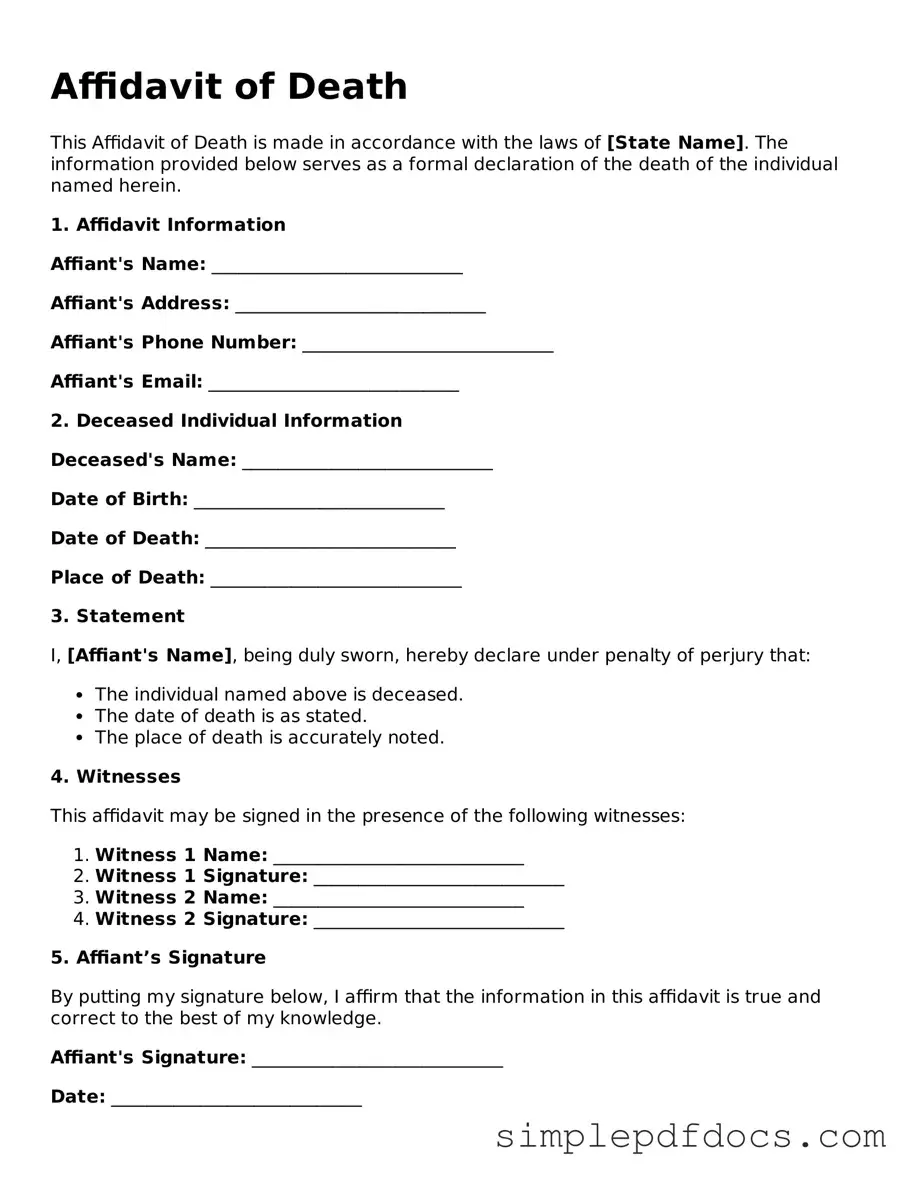Attorney-Approved Affidavit of Death Form
The Affidavit of Death form is a legal document used to declare that an individual has passed away. This form serves as a formal acknowledgment of death, which can be necessary for settling estates, transferring property, or managing financial matters. Understanding how to complete and file this form is essential for those handling the affairs of a deceased loved one.
Get Document Here
